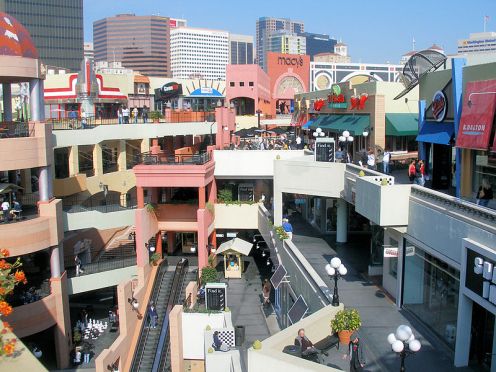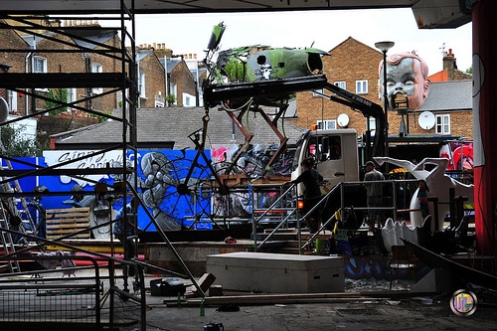Hand In ISD Yr 3 real – PLEASE OPEN FILE FOR FULL 3A PORTFOLIO.
Jamie Reid
•November 6, 2012 • Leave a CommentKeeping Inspired
•October 8, 2012 • Leave a CommentThe collection of work above consists of work that concentrates on the filling of space. Anthony Gormley has an incredible eye for exactly this, as he focuses on the spatial movement of people in and around his work. Also shown, are selected works from the Biennalle exhibition in Venice, which represent this line of interest as well.
Visit and Reflection
•October 8, 2012 • Leave a CommentMy initial site visit consisted of walking from Ladbroke Grove Station, under the Westway for about 40 mins towards westway roundabout. The big open spaces offer the option for numerous ideas, however my first interest comes from the amount of people that navigate these spaces. Why do people navigate these spaces, or choose not to? Is it because it is unsafe? Or that there is nothing to do? Can we bring people to these spaces?
The images reflect on the amount of people that I came across, and the pink circles are a conceptual and innacurate representation of the bustle and noise that they create in each specific location. I am trying to get an understanding of the levels of human activity there is around the area.
The idea of destruction and construction is exciting, and Westway, in its time was imposed into peoples lives, for better or worse.
“The so-called slum housing near the route of The Westway and West Cross Route was already being demolished as the road was constructed. At Notting Dale, terraced housing was replaced with the three 24-story blocks”
CRITICAL DESIGN – “Construction by Destruction”
The interesting thing about the construction of the westway is that although it has obviously created a solution to a long term and large scale problem of accessibility, at the time it created problems for those living in the area.
“At its opening in 1970, the road was the largest continuous concrete structure in Britain”
These works by Guy Laramee are a physical example of Constructing by destroying, creating by removing.
My interests so far lie in the following:
– Navigation of people: I would like my final project to orient around people, their movements, behaviours or ways of experiencing space. This in turn could lead onto designing an installation or device that tracks, records or simply reflects the results of my findings. I find the idea of how people deal with their surroundings fascinating, for you could find any one space and see that people deal with them in different ways. The unpredictability or predictability that lies within is exciting, especially when a potential design can throw off trends in psychogeography.
– Filling Space: I have numerous inspirations of works that deal with how to fill space with design, whether it be minimal or vast. With the Westway, the underpass offers huge potential spaces that could be interesting to work with.
FLÂNEUR
Flâneur: comes from the French noun flâneur—which has the basic meanings of “stroller”, “lounger”, “saunterer”, “loafer”.
In architectural and urban planning terms, flâneur relates to those who are indirectly and unintentionally affected by a particular design they experience only in passing. This idea is a less invasive way of looking at psychogeography, for it is an unintentional act rather than an imposed design, i.e: critical design.
“In the context of modern-day architecture and urban planning, designing for flâneurs is one way to approach issues of the psychological aspects of the built environment. Architect Jon Jerde, for instance, designed his Horton Plaza and Universal CityWalk projects around the idea of providing surprises, distractions, and sequences of events for pedestrians.” – Wikipedia
Horton Plaza, San Diego
 The unusual layout of the mall is designed to take people off guard, make them turn, make them think more about their navigation through the space, something that I am considering in my research development.
The unusual layout of the mall is designed to take people off guard, make them turn, make them think more about their navigation through the space, something that I am considering in my research development.
Night Light Shoot, Westway.
I went and took some photos under the Westway, and my intention was to use light photography to try and portray a couple ideas and visualize the space with so called “objects” in it.
 I struggled to obtain any depth in my light tracking, which affected the overall image, as well as the ‘spaces’ I was trying to get out of the photos.
I struggled to obtain any depth in my light tracking, which affected the overall image, as well as the ‘spaces’ I was trying to get out of the photos.
 For the photo below I strapped the torch to my foot and walked around, the result is effective, however the torch needs to be brighter in future.
For the photo below I strapped the torch to my foot and walked around, the result is effective, however the torch needs to be brighter in future.
BOUNDARIES AND THRESHOLDS – Boundaries between people and their surroundings, wether it be a physical factor like design, or the personal boundaries between people and others around them.
Scott Snibbe is a media artist, filmmaker, and entrepreneur. His work is often interactive, and deals with the topics of personal space, boundaries and interrelations between people and space.
“Tardis” by Mark Wallinger – The installation is a reflection on boundaries and thresholds
Richard Sennet is a Professor of Sociology, and in his talk he discusses similar themes of boundaries and thresholds, and the relation of this to identity. Identity of oneself, and identity of yourself to others.
“Almost all 20th century planning and architecture has sought to create edges that are boundaries rather than edges. The Westway which runs between rich and poor communities.
Here is a piece that reflects this interest of boundaries. It is by designer Nova Jiang, and is an exploration of navigation through space, as well as the restrictions people come across.
Designer Zoe Chan
Questioning boundaries, and perhaps even distorting them. The collection of lines are close enough to be read as architectural elements or boundaries. Yet sound and light and even limited movement can pass through the cor
Boundaries Though Light – Anthony McCall
The site that interests me is Ackland Road, at first I took photos of it as I was attracted the lack of a viewpoint, a curiosity to look into somewhere that your perhaps not supposed to.
However this initial interest grew when researching about ackland street itself. I read that at the opening of the Westway in 1970, it was the residents of Acklam Street that put the banners outside their houses, exclaiming “Get us out of this hell – re-house us now”
More specifically towards the site, found out that an exhibition was put on in 2009 behind the area, by a team called the mutoid waste company. A company well know to me and to which inspire me greatly.
The work exhibited in the show is varied in media, from fire breathing sculptures to political posters. Work by Joe Rush, an ex punk of the 80’s, and orchestrator of the Mutoid Waste Company explore the spontaneous and creative, with his vast sculptures of recycled scrap.
The work that specifically interested me was that of Jamie Reid’s. As he was provocative in his posters, of which were the foundation of the Sex Pistols graphic image. He was an english artist and anarchist, related to the situationist movement. His concept was to simplify and relate to the general public as easily and quickly as he could.
“Accessibility is key”















































